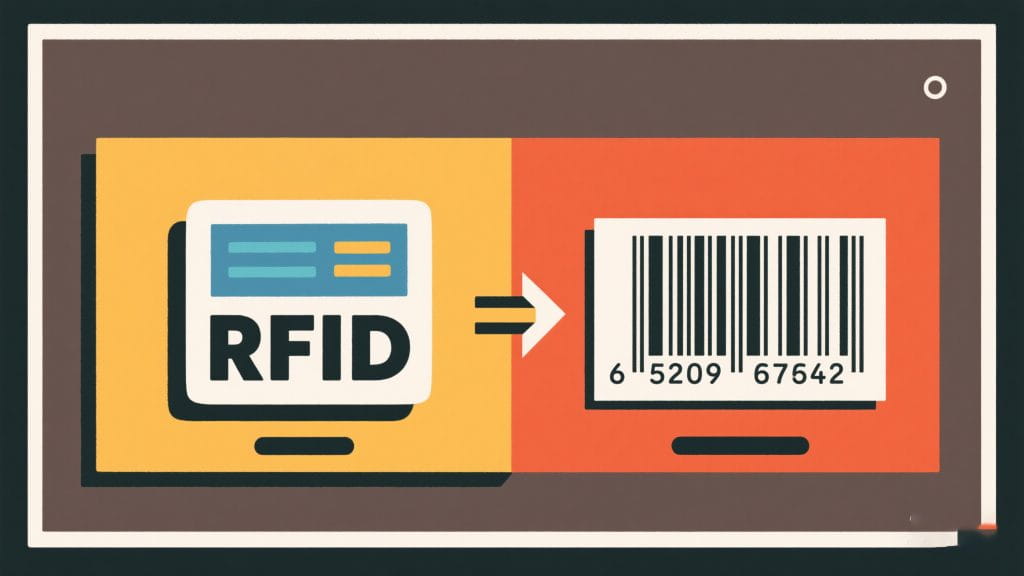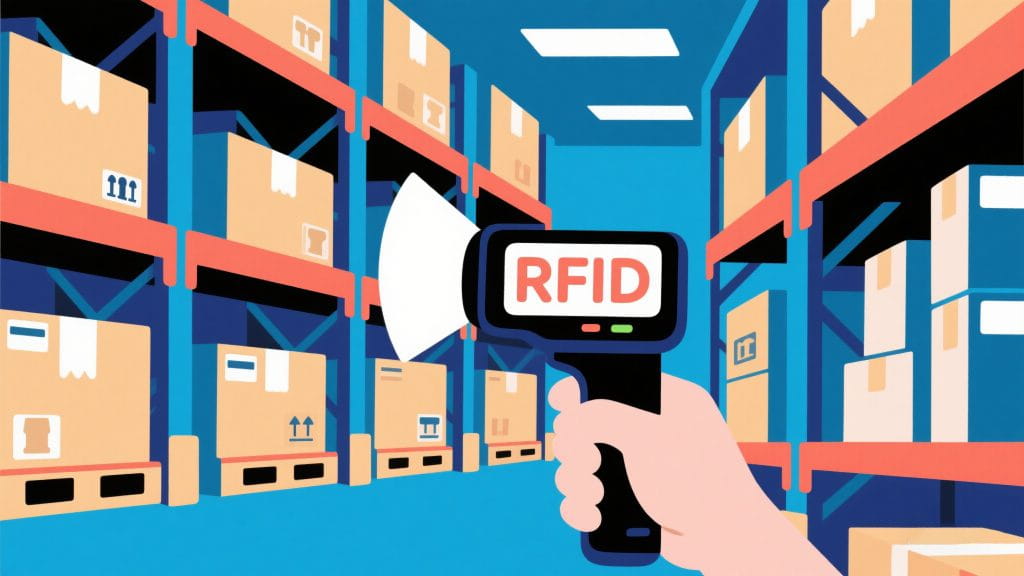How We Actually Track Laptops in Enterprises with RFID—Lessons from LA Labs to Brooklyn R&D Centers
1Candid insights into using RFID for enterprise laptop tracking—real projects, mistakes, shortcuts, and lessons from LA and Brooklyn.
MoreAll RFID Product
Managing inventory efficiently is critical for businesses to stay competitive. While barcodes have been the go-to solution for decades, RFID (Radio-Frequency Identification) technology is now gaining traction as a smarter alternative. But which system offers a better return on investment (ROI)? Let’s break down the key differences, costs, and long-term benefits to help you decide.

Barcodes use optical scanners to read printed labels. Each label contains a unique identifier tied to a database. They’re affordable to implement but require line-of-sight scanning and manual handling, which slows down processes.
RFID uses radio waves to automatically identify tags attached to items. Unlike barcodes, RFID tags don’t need direct visibility, enabling batch scanning of hundreds of items simultaneously. This reduces human error and speeds up workflows.
Verdict: Barcodes win for short-term savings, but RFID scales better for large operations.
Barcodes demand manual scanning, which is time-consuming and prone to errors. RFID automates data capture, cutting labor costs by up to 30% and reducing stock discrepancies.

Example: A Cykeo RFID reader installed in a retail warehouse reduced inventory counting time from 8 hours to 20 minutes.
Barcodes fail if labels are damaged or poorly printed. RFID tags are durable and readable through dust, moisture, or packaging. This ensures near-100% inventory accuracy for RFID.
RFID supports real-time tracking, making it ideal for complex supply chains. Barcodes lack this adaptability, requiring constant manual updates.
| Factor | Barcode | RFID |
|---|---|---|
| Labor Costs | High (manual) | Low (automated) |
| Scanning Speed | Slow | Instant (100s/sec) |
| Data Accuracy | 85-90% | 99%+ |
| Lifespan | Short (damage-prone) | Long (10+ years) |
Key Takeaway: RFID’s higher upfront cost pays off in 12-18 months for medium-to-large businesses through labor savings and error reduction.
Cykeo’s RFID solutions, for instance, helped a logistics client cut stockouts by 60% and improve order fulfillment speed.
Whether you’re leaning toward RFID or barcodes, Cykeo offers tailored solutions to optimize your inventory management. Contact our experts at contact@cykeo.com for a free consultation.
Candid insights into using RFID for enterprise laptop tracking—real projects, mistakes, shortcuts, and lessons from LA and Brooklyn.
MoreDiscover the most durable handheld RFID readers for construction sites. Learn about rugged design, weather resistance, and Cykeo’s solutions for harsh environments.
MoreDiscover the top software solutions that integrate seamlessly with fixed RFID readers. Learn how Cykeo’s systems sync with ERP, WMS, and IoT platforms for real-time data automation.
MoreInventory management is a vital aspect of business operations. It directly impacts asset security, cost control, and operational efficiency. However, traditional inventory methods often rely on manual processes, which are not only ineffi...
More